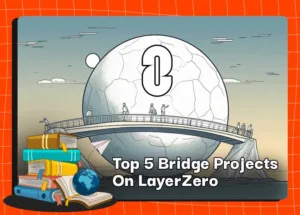
Last week, Ethereum saw a significant increase in its price after releasing notes from its last developer meeting hinting at progress for its upcoming upgrade, called The Merge.

This upgrade will change the secured revolution, energy consumption, and tokenization. Betting will play an essential part in that. So how should investors prepare for upcoming events?
A series of upgrades are happening on the Ethereum blockchain to change it from Proof of Work (PoW) to Proof of Stake (PoS) consensus. To accomplish this, the milestones are:
- The creation and launch of the Beacon Chain happened on December 1, 2020. The Beacon Chain is what introduces PoS on Ethereum. Hence, it is called the “consensus layer.”
- Replacing the current chain’s consensus mechanism from PoW to PoS (current estimate: happens in September.) The current chain, Mainnet, will then act as the “execution layer” as PoW is currently running, Beacon Chain will replace it.
The consensus layer takes care of the security of the network. The execution layer is where smart contracts run, and transactions are generated.
Since the upgrade will connect these two chains to act as one, the event’s name has been updated from ETH 2.0 to “The Merge.”
Why are merge issues important?

Beacon Chain has been running since December 2020, a good part of the ETH supply has been put into it, getting rewards for running the network. Currently, there are over 12 million ETH staked on the Beacon Chain smart contract:
That number is close to 10% of the current ETH Supply. Furthermore, this ETH is long-locked, as there is no date for implementing out-of-the-box capabilities in the ETH PoS chain.
How does it affect ETH emissions?
After the PoS change, there will be no more mining rewards. As a result, the ETH emissions will be reduced significantly, above 10% of the supply is locked on the staking contract.

According to Etherscan, a total of 13,347 ETH was added to the current supply on July 21. If we remove the Block Rewards (mining) and leave only the Staking Rewards, the daily net result will be negative. That means more ETH will be burned as fees rather than rewarded, reducing the total supply of ETH.
How do we profit from this change?
None of the following is financial advice, and investors should always exercise caution when trading cryptocurrencies. Analyzing the presented data, there are several investment strategies that an investor can implement:
Buy ETH
With the release of a specific date for “The Merge,” there will be a short period where the supply of ETH will continue to increase. Then it becomes “deflationary.” If the investor believes that ETH will have a suitable place in the crypto market and its demand will increase, the price of ETH will increase.
We have seen some price action already, but there is still room for further upside, as the incentive to increase the amount of ETH staked (and no longer in circulation) will increase.
Buy ETH for a liquidity deposit
When ETH is sent to Beacon Chain the staking contract is locked for an indefinite period, and the minimum amount required to deposit is relatively high (at least 32 ETH), a pool is created to help users stake their ETH bet. Some groups then created an ERC-721 token as a tradable receipt of that staked ETH.
Examples include Lido’s stETH token and Rocket Pool rETH. When users visit their platform to stake ETH, the token is minted 1:1 into ETH.

However, since it is a receipt for future redemption, it is traded at a discount to the ETH price. This discount is not fixed; the market determines its value, as we can see in the Footprint chart below:

Buying the staking version will give the investor an extra 2-3% profit and the accrued interest that comes with it if you are willing to wait for the hot feature release after PoS implementation on the Ethereum blockchain. There’s no due date for the rollout of this feature (it hasn’t been completed yet), but the exact timeline is 6-12 months after “The Merge.”
DISCLAIMER: The Information on this website is provided as general market commentary and does not constitute investment advice. We encourage you to do your own research before investing.
Join CoinCu Telegram to keep track of news: https://t.me/coincunews
Follow CoinCu Youtube Channel | Follow CoinCu Facebook page
Harold
CoinCu News




















